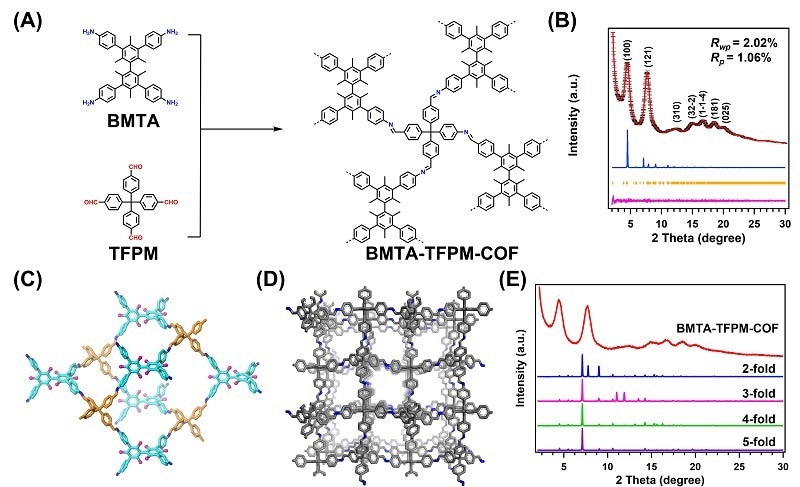Covalent organic frameworks (COFs) could be a perfect platform for extracting or detecting metal ions, thanks to their huge surface area and diverse functional building units.
 Mechanism of 3D COFs. Image Credit: Shanghai Advanced Research Institute
Mechanism of 3D COFs. Image Credit: Shanghai Advanced Research Institute
Nevertheless, most 3D COFs have interpenetration as the presence of non-covalent communications among the adjacent nets, leading to reduced surface areas and porosities, and thus restricts their applications in molecular/gas adsorption and catalysis.
In recent times, a study group headed by Prof. ZENG Gaofeng and Assoc. Prof. XU Qing from the Shanghai Advanced Research Institute (SARI) of the Chinese Academy of Sciences has built a new non-interpenetration 3D COF for Au ions capture through imine bonds in the frameworks. The high surface area and ample cavities offered high Au3+ capacity (570.18 mg g-1), selectivity (99.5%), and efficiency (68.3% adsorption of utmost capacity in 5 minutes).
On April 23rd, 2023, Advanced Functional Materials published this research.
The synthesized BMTA-TFPM-COF showed decent crystallinity with dia topology and a high Brunauer-Emmett-Teller (BET) surface area of 1,924 m2 g-1. Notably, the open cavities and exposed C=N bonds from non-fold interpenetration add up to selectivity, stability, and high capacity of Au3+ uptake.
The mechanism of Au capture was exhibited by the experiment. The protonated C=N bonds, as a result of the influence of the HAuCl4 and the protonated nitrogenous groups, were able to adsorb AuCl4 - and minimize Au(III) to Au(I) and Au(0) in an acidic solution. Hence, the BMTA-TFPM-COF with ample exposed C=N bonds can encourage the transformation from Au(III) to Au(I) and Au(0) via the protonated C=N bonds, which additionally confirmed that the C=N bonds could take part in the reduction of Au(III).
This research provides a new understanding of the development of 3D COFs for Au3+ capture.
Journal Reference:
Liu, M., et al. (2023). Non‐Interpenetrated 3D Covalent Organic Framework with Dia Topology for Au Ions Capture. Advanced Functional Materials. doi.org/10.1002/adfm.202302637.